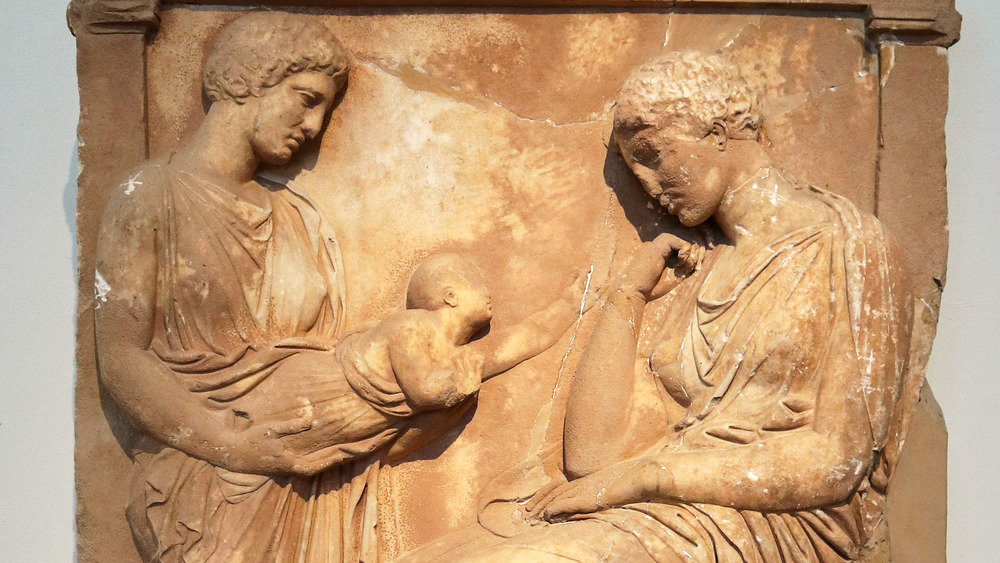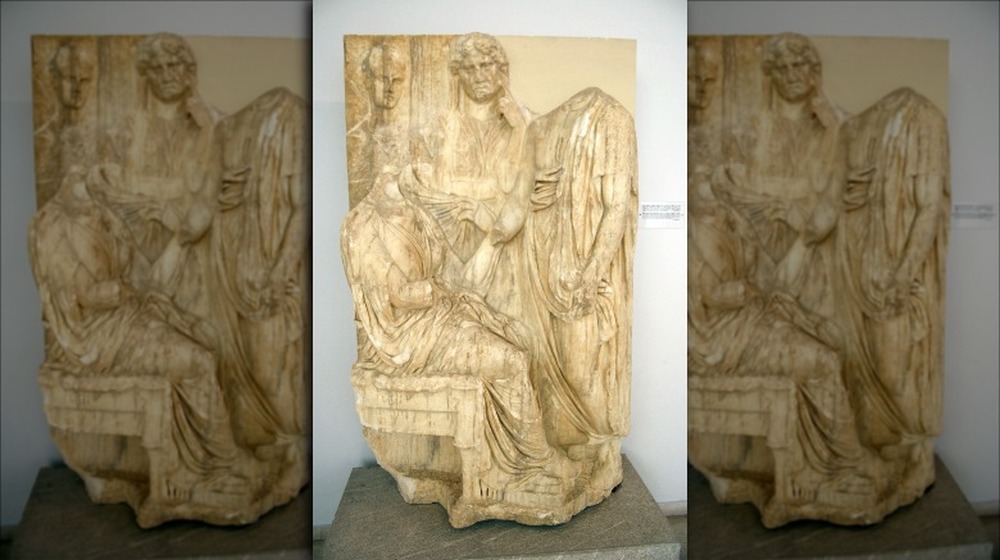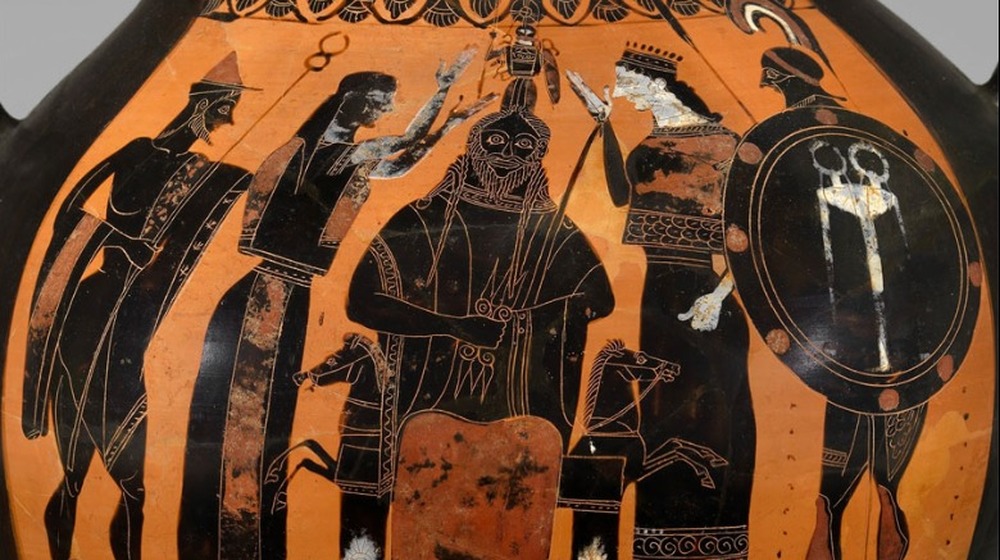The Truth About Pregnancy In Ancient Greece
In the Classical era of Ancient Greece, pregnancy and childbirth were seen not only as a biological imperative for the propagation of the human species, but also a social and political obligation. According to Encyclopedia.com, the end goal of marriage was procreation, and the goal of procreation was to produce male heirs who could become soldiers to defend the city-state and participate in its political maintenance. As such, it was a moral, legal, and social obligation for women to start churning out babies more or less as soon as they completed puberty. The frequency of intercourse by married couples was regulated by law.
The problem, however, was that the Ancient Greeks had a pretty poor understanding of the female body. In their view, women's bodies were more porous than men's and soaked up more moisture, which they then converted to blood and expelled as menses. Women's bodies, soft and moist due to inactivity, required the dry heat of a man's seed. As Women in the Ancient World relates, these absorbent bodies often retained blood to the point of pain, and childbirth was the best known remedy for stretching the blood vessels and relieving menstrual discomfort. Additionally, the Greeks saw the uterus as a free-floating, almost sentient thing, prone to wander through the body and cause health problems, a condition known as hysteria. The only reliable ways to stop a wandering womb from attacking other organs was to weigh it down with a baby or moisten it with a man's seed as often as possible.
How not to have a baby in Ancient Greece
Despite the moral and social pressure on women to have babies, having too many babies was a problem of its own. As the Women in Antiquity blog explains, an overabundance of sons would mean spreading the inheritance too thin. Every daughter needs a dowry, which can add up quickly. As a result, contraception and abortion were not seen as immoral in ancient Greece, and despite the lack of material evidence of contraceptives, the fact that the average family size was small suggests that they were in common use.
The Greek physician Soranus of Ephesus writes at some length about the use of herbal remedies as contraceptives and abortifacients. Most of these herbs were used as pessaries (inserted inside the woman) with the primary goal of blocking the passage of seed into the uterus. Some, however, were taken orally, including silphium, which was so popular that it actually got over-cultivated into extinction. Pomegranate seeds were also thought to prevent fertility due to the mythological story in which Persephone eats pomegranate and has to stay in the Underworld during the winter, causing a period of infertility on the Earth. Many of the plants taken as abortifacients, such as pennyroyal, were toxic even in small doses and contributed to the already very high rate of pregnancy-based mortality in ancient Greece. It didn't help that many of these herbs were taken by women on their own initiative, and physicians generally only became involved if there were complications.
Having babies in Ancient Greece was a dangerous proposition
For the most part, the actual delivery of babies was conducted by midwives, with physicians only being called in case of complications. As Encyclopedia.com explains, however, lack of understanding of anatomy led to some problematic treatments for those complications. In general, the Greeks understood the uterus to be simply a container for the baby, and not a powerful muscle that can shove the baby out. As such, slow deliveries were often treated by vigorously shaking the mother in the hopes of knocking the baby loose.
Midwives, on the other hand, generally had the in-labor mother sit on either a birthing stool or a hard bed for the delivery process. They would then aid the mother with controlled breathing (similar to modern Lamaze techniques), warm cloths applied to the abdomen, strong-smelling and soothing herbs like myrrh to promote delivery, and other things to make the mother comfortable. After delivery, the midwife would signal whether the child was a boy or girl, cut the umbilical cord, and determine whether it was healthy enough to live. Unfortunately, infant and maternal mortality were very high in the ancient world, with many mothers dying of exhaustion, hemorrhage, or eclampsia — seizures as a result of high blood pressure. The average life expectancy for a woman at this time was about 35 years. Infant mortality was increased by the shockingly common practice of exposing unwanted babies in remote areas, which was performed at the father's discretion. This was especially common for female babies whose fathers didn't want to pay dowries.
The religious side of childbirth in Ancient Greece
Not all birthing aids for mothers were medicinal. The Ancient Greeks were a religious culture with gods for all aspects of life, and childbirth was no exception. As Women in Antiquity explains, the goddesses Hera and Artemis were seen as special protectors of women, and they, together with Eilithyia, the goddess of childbirth, were often propitiated in hopes of an easy and healthy childbirth, or as thanksgiving for one. Common offerings to these goddesses would include articles of clothing. Those have not survived the intervening centuries, but the metallic pins and fasteners that would have gone with them are found throughout the archaeological record. These pins were related to the symbolic action of the woman loosening her belt during childbirth, which was meant to represent a loosening of the womb. Of the various belt fasteners found among Greek artifacts, a staggering 84 percent of them were dedicated to female deities.
The birth was followed by a 40-day resting period for the mother and baby. The child wouldn't be named for 10 days and would only be formally presented outside of the family following the full 40-day period, out of concerns for infant mortality. This formal presentation ceremony included a purification ritual for mother and child that seems to have featured the ritual sacrifice of a dog. A large celebratory feast closed out these ceremonies, which based on the archaeological record likely included cakes, showing that birthdays and cakes have a long history together.



